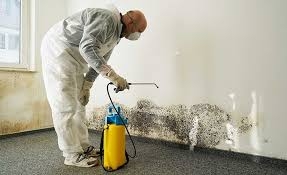Fire can be one of the most devastating events a property owner may face. The immediate threat to life and safety is just the beginning—after the flames are extinguished, the aftermath can leave homes, businesses, and belongings severely damaged. Fire damage restoration is a critical process that not only repairs structural damage but also addresses smoke, soot, and water damage from firefighting efforts. Understanding the process, benefits, and importance of professional restoration can help property owners recover faster and more safely.
Understanding Fire Damage
Fire damage is complex. While flames can destroy furniture, walls, and personal belongings, smoke and soot can infiltrate areas far beyond the visible damage. Smoke can leave lingering odors, discolor surfaces, and cause long-term health hazards if not properly treated. Additionally, water used to extinguish the fire can saturate floors, walls, and insulation, creating conditions for mold growth if left untreated.
Types of fire damage include:
-
Structural Damage: Warped or weakened walls, floors, and ceilings due to intense heat.
-
Smoke Damage: Discoloration, odors, and corrosion on surfaces and electronics.
-
Soot Damage: Fine particles that penetrate fabrics, vents, and hard-to-reach spaces.
-
Water Damage: Residual water from firefighting can compromise structural integrity and encourage mold growth.
Understanding these categories helps property owners recognize why professional fire damage restoration is essential. Attempting DIY cleanup can exacerbate damage or pose safety risks.
The Importance of Professional Fire Damage Restoration
Professional fire damage restoration companies provide expertise, equipment, and techniques that homeowners cannot replicate. Restoration goes beyond cleaning; it involves assessing structural integrity, removing hazardous materials, and restoring the property to pre-fire conditions.
Key reasons to hire professionals include:
-
Safety: Fire-damaged structures can be unstable. Professionals are trained to handle risks such as weakened floors, exposed wiring, and hazardous debris.
-
Efficient Cleanup: Specialized equipment like industrial-grade vacuums, air scrubbers, and ozone generators ensures thorough smoke and soot removal.
-
Comprehensive Restoration: Experts address all aspects of damage, including water damage, odor removal, and structural repairs.
-
Insurance Assistance: Experienced companies work with insurance providers to document damage, expedite claims, and reduce financial stress.
Attempting restoration without expertise can lead to incomplete cleaning, lingering odors, and increased long-term costs.
The Fire Damage Restoration Process
A structured restoration process ensures that every aspect of fire, smoke, and water damage is addressed. The typical process includes the following steps:
1. Assessment and Inspection
The first step is a thorough inspection of the property. Restoration professionals assess the extent of structural damage, smoke infiltration, soot deposition, and water damage. This evaluation forms the basis of a restoration plan and insurance documentation.
2. Securing the Property
To prevent further damage or theft, the restoration team may board up broken windows, reinforce damaged walls, and secure the site. This step ensures that the property remains safe while restoration work begins.
3. Water Removal and Drying
Water used during firefighting efforts can cause significant secondary damage. Professionals use pumps, dehumidifiers, and moisture meters to remove water and dry the property. Proper drying prevents mold growth and stabilizes the structure for further restoration.
4. Smoke and Soot Removal
Specialized cleaning agents and equipment are used to remove soot and smoke residues from walls, ceilings, floors, and personal belongings. Advanced techniques, such as thermal fogging and air scrubbing, help neutralize odors and prevent further contamination.
5. Cleaning and Sanitization
Restoration involves cleaning surfaces, furniture, and personal items. Disinfectants and deodorizing treatments ensure that bacteria, allergens, and odors are eliminated. Salvageable items may be professionally cleaned and restored.
6. Repair and Reconstruction
Finally, the restoration team repairs structural damage, replaces damaged materials, and restores the property to its pre-fire condition. This may involve painting, flooring replacement, electrical work, and rebuilding sections of the property affected by fire.
Benefits of Professional Restoration
Professional fire damage restoration offers benefits beyond immediate cleanup:
-
Health Protection: Removal of smoke, soot, and mold reduces respiratory risks and allergens.
-
Property Preservation: Expert techniques minimize permanent damage to structures and belongings.
-
Time Efficiency: Professionals complete the process faster than DIY efforts, allowing occupants to return home safely sooner.
-
Insurance Support: Detailed documentation and professional restoration can improve claim approval and coverage.
Tips for Homeowners After Fire Damage
While waiting for professionals, homeowners can take precautionary steps:
-
Avoid Entering Damaged Areas: Structural damage may pose risks. Wait for experts to assess safety.
-
Do Not Attempt Extensive Cleaning: Certain residues, like soot and chemicals, require specialized treatments.
-
Document Damage: Take photos and make notes for insurance purposes.
-
Contact Your Insurance Company: Notify them immediately to begin the claim process.
These steps ensure safety and facilitate a smoother restoration process.
Choosing the Right Fire Damage Restoration Company
Selecting a reputable restoration company is crucial. Key factors to consider:
-
Experience and Certification: Look for certified technicians with experience in fire damage restoration.
-
Comprehensive Services: Ensure the company handles all aspects, including smoke, soot, water, and structural repairs.
-
Availability: Fire emergencies require immediate response; choose a company offering 24/7 services.
-
Customer Reviews: Positive testimonials and references indicate reliability and quality service.
Conclusion
Fire damage restoration is more than just cleaning up after a fire; it is a meticulous process that ensures safety, health, and property recovery. From addressing structural damage to removing smoke, soot, and water damage, professional restoration services provide the expertise, equipment, and support homeowners need during a stressful time. By acting quickly and hiring certified professionals, property owners can restore their homes, safeguard their belongings, and regain peace of mind.


